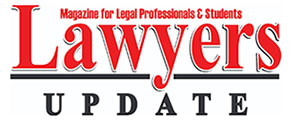SCHOOL SAFETY REGULATION: FIRE SAFETY MEASURES
Avinash Mehrotra
v.
Union of India & Others
2009 (5) SCALE 354: (2009) 6
sec 398: 2009 (5) SLR 514: 2009 (81) AIC 76
Writ Petition (Civil) No. 483
of 2004
Dated: April 13, 2009
BENCH: Justices Dalveer Bhandari and Lokeshwar Singh Panta.
In view of what has happened in Lord Krishna Middle School in District Kumbakonam and other incidents which have been enumerated in the preceding paragraphs, it has become imperative that each school must follow the bare minimum safety standards, in addition to the compliance of the National Building Code of India, 2005, in particular Part IV – Fire and Life Safety and the Code of Practice of Fire Safety in Educational Institutions (IS 14435:1997) of the Bureau of Indian Standards. The said safety standards are enumerated herein below:
3.1 Fire Safety Measures in Schools:
i. Provision of adequate capacity and numbers of fire extinguishers of ISi marks to be provided in eye-catching spots in each block of the school.
ii. First Aid kits and necessary medicines should be readily available in the school.
iii. Provision of water tank and separate piping from the tank with hose reel to the ground floor and first floor.
iv. Fire fighting training to all teachers and students from X to XII standards.
v. A Fire Task Force in every school comprising of the Head of the institution, two teachers/ staff members and one member from the Fire and Rescue Department should be constituted. The Fire and Rescue Department member shall monitor and make fire safety plans and conduct inspections once every three months.
vi. Display of emergency telephone numbers and list of persons to be contacted on the notice board and other prominent places.
vii. Mock drills to be conducted regularly. Fire alarms to be provided in each floor and for rural schools separate long bell arrangements in case of emergency.
viii. All old electrical wiring and equipment shall be replaced with ISi mark equipment and routine maintenance conducted by the School Management in consultation with the Fire and Rescue Department.
ix. No High Tension lines should run inside or in close proximity to the school. Steps must be taken to shift them if they are already there.
x. The Fire and Rescue Department shall frame guidelines with “DOS and DON’Ts’ for schools and issue a fitness certificate, which shall be renewed periodically.
3.2 Training of School Teachers and Other Staff:
i. The teachers along with other staff shall be trained to handle safety equipment, initiate emergency evacuations and protect their students in the event of fire and other emergencies by the Fire and Rescue Department.
ii. They shall also be trained in providing emergency first-aid treatment.
iii. There shall be a School Safety Advisory Committee and an Emergency Response Plan drafted by the Committee in approval and consultation with the concerned Fire and Rescue Department.
iv. Emergency Response Drills conducted at regular intervals to train the students as well as the school staff.
v. All schools to observe Fire Safety Day on 14th of April every year with awareness programs and fire safety drills in collaboration with the Fire and Rescue Department.
3.3 School Building Specifications:
i. The school buildings shall preferably be a ‘A:_ Class construction with brick/stone masonry walls with RCC roofing. Where it is not possible to provide RCC roofing only non-combustible fireproof heat resistance materials should be used.
ii. The nursery and elementary schools should be housed in single storied buildings and the maximum number of floors in school buildings shall be restricted to three including the ground floor.
iii. The School building shall be free from inflammable and toxic materials, which if necessary, should be stored away from the school building.
iv. The staircases, which act as exits or escape routes, shall adhere to provisions specified in the National Building Code of India 2005 to ensure quick evacuation of children.
v. The orientation of the buildings shall be in such a way that proper air circulation and lighting is available with open space all round the building as far as possible.
vi. Existing school buildings shall be provided with additional doors in the main entrances as well as the classrooms if required. The size of the main exit and classroom doors shall be enlarged if found inadequate.
vii. School buildings have to be insured against fire and natural calamities with Group Insurance of school pupils.
viii. Kitchen and other activities involving use of fire shall be carried out in a secure and safe location away from the main school building.
ix. All schools shall have water storage tanks.
3.4 Clearances and Certificates:
i. Every School shall have a mandatory fire safety inspection by the Fire and Rescue Services Department followed by issuance of a ‘no objection certificate’ to the School as a mandatory requirement for granting permission for establishing or continuation of a School.
ii. An Inspection Team consisting of experts like a Civil Engineer, a Health Officer, a Revenue Officer, a Psychologist, a Fire Officer, a local body officer and a development officer besides the educational authorities shall carry inspection and assessment of infrastructural facilities before the commencement of each academic year. The Team shall submit its Inspection Report to the concerned district Chief Educational Officer.
iii. The building plans for schools shall be prepared only by a Government certified engineer and the PWD Executive Engineer concerned should inspect the building and award a structural stability certificate. Stability Certificates shall be issued by the State or Central Government Engineers only and shall be mandatory for granting permission for establishing or continuation of a School.
iv. In every district, one Recognition Committee headed by a retired judge shall be constituted. Officials from Revenue Department, Public Works Department, Fire Service, Electricity Board, Health and Education Department, a reputed NGO shall be members. They shall visit the schools periodically or at least the erring institutions as listed by the Chief Education Officer.
v. Conditional recognition/approval shall never by resorting to any school.
It is the fundamental right of each and every child to receive education free from fear of security and safety. The children cannot be compelled to receive education from an unsound and unsafe building.
In view of what happened in Lord Krishna Middle School in District Kumbakonam where 93 children were burnt alive and several similar incidences had happened in the past, therefore, it has become imperative to direct that safety measures as prescribed by the National Building Code of India, 2005 be implemented by all government and private schools functioning in our country.
We direct that:-
i. Before granting recognition or affiliation, the concerned State Governments and Union Territories are directed to ensure that the buildings are safe and secured from every angle and they are constructed according to the safety norms incorporated in the National Building Code of India.
ii. All existing Government and private schools shall install fire extinguishing equipment within a period of six months.
iii. The school buildings be kept free from inflammable and toxic material. If storage is inevitable, they should be stored safely.
iv. Evaluation of structural aspects of the school may be carried out periodically. We direct that the concerned engineers and officials must strictly follow the National Building Code. The safety certificate is issued only after proper inspection. Dereliction in duty must attract immediate disciplinary action against the concerned officials.
v. Necessary training be imparted to the staff and other officials of the school to use the fire extinguishing equipment.





